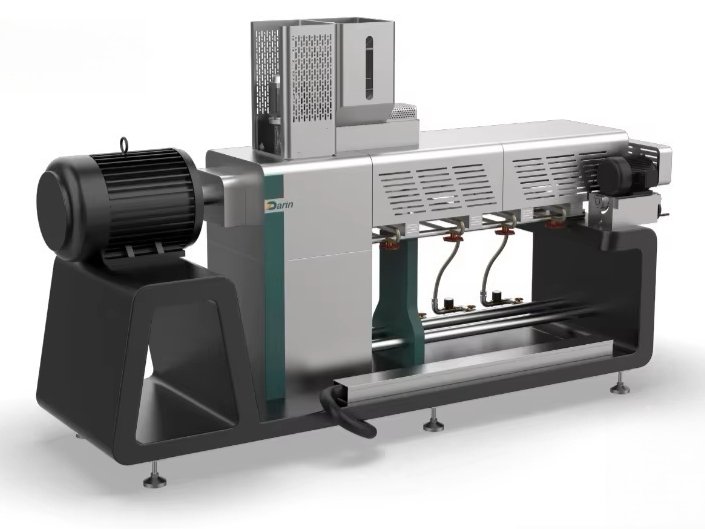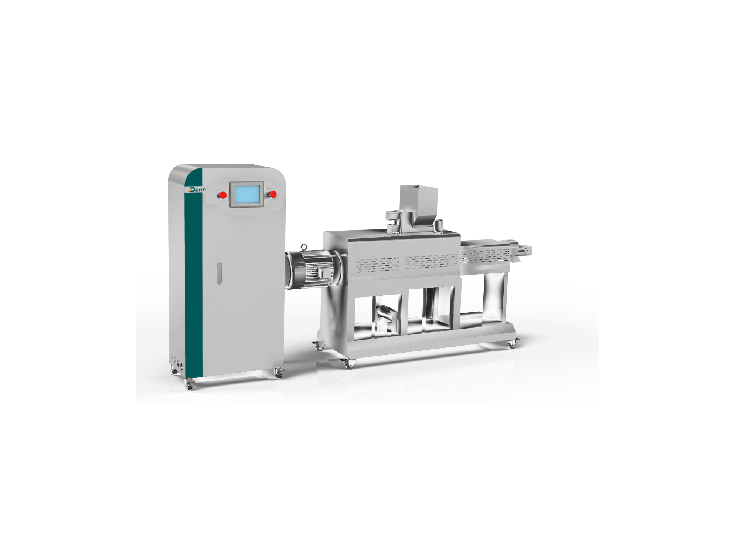Every pet owner wants the best for their furry friend, especially when it comes to nutrition. Traditional commercial dog food often contains preservatives, fillers, and processed ingredients that may not be ideal for your pet’s health. This has led many pet parents to seek out fresh, human-grade options like The Farmer’s Dog. But how is this food actually made, and what makes it different? Understanding the production process can help you make an informed decision about what to feed your pup.
The Farmer’s Dog food is made using fresh, human-grade ingredients that are gently cooked at low temperatures to preserve nutrients. The process includes sourcing quality whole foods, cooking them in USDA-approved kitchens, portioning meals according to a dog’s unique needs, and delivering them fresh to customers’ doors. Unlike traditional kibble, The Farmer’s Dog does not use preservatives or high-heat processing, ensuring optimal nutrition for pets.
When choosing a pet food brand, it’s important to understand what goes into the food and how it’s made. Let’s dive deeper into The Farmer’s Dog’s production process to see why it’s a superior option for canine nutrition.
What Ingredients Are Used in The Farmer’s Dog Food?

Ensuring your dog receives optimal nutrition is paramount for their health and longevity. Many commercial dog foods contain fillers and artificial additives that may not provide the necessary nutrients, potentially leading to health issues over time. The Farmer's Dog offers a fresh, human-grade alternative designed to meet your dog's dietary needs without compromising on quality.
The Farmer's Dog utilizes fresh, human-grade ingredients sourced from reputable suppliers, including local farms and human-food purveyors. Their recipes are free from fillers and artificial additives, ensuring a nutritious and balanced diet for dogs. citeturn0search0
Understanding the specific components of your dog's food is crucial. Let's delve deeper into the ingredients, sourcing practices, and quality controls that set The Farmer's Dog apart.
Overview of Fresh, Human-Grade Ingredients
The Farmer's Dog emphasizes the use of whole, human-grade meat and vegetables in their recipes. This approach ensures that the food is safe enough for human consumption and provides essential nutrients for dogs. Key ingredients across their recipes include:
-
Proteins: Whole muscle and organ meats such as beef, turkey, pork, and chicken. These proteins supply vital amino acids necessary for various bodily functions. citeturn0search1
-
Vegetables and Legumes: Ingredients like sweet potatoes, lentils, carrots, kale, and green beans offer dietary fiber, vitamins, and minerals that support overall health. citeturn0search1
-
Healthy Fats: Sources like fish oil provide omega-3 fatty acids, which are beneficial for skin, coat, and joint health. citeturn0search10
Each recipe is formulated by board-certified nutritionists to be 100% complete and balanced according to AAFCO standards, ensuring your dog receives the right proportions of protein, fat, fiber, vitamins, and minerals. citeturn0search0
Sourcing Practices and Quality Control
The Farmer's Dog is committed to transparency and quality in their sourcing and production processes:
-
Ingredient Sourcing: All ingredients are sourced from reputable food suppliers, local farms, and other human-food purveyors that meet human-grade standards. This ensures that the components are of high quality and suitable for consumption. citeturn0search0
-
Cooking and Preparation: The food is gently cooked at low temperatures to preserve nutritional integrity while eliminating potential pathogens. This method enhances digestibility and nutrient absorption. citeturn0search1
-
Facility Standards: Meals are prepared in facilities licensed to produce human food, adhering to stringent safety and quality regulations. Each step of sourcing, cooking, packaging, and storing meets the standards governing human food production. citeturn0search7
Avoidance of Fillers and Artificial Additives
The Farmer's Dog distinguishes itself by excluding common fillers and artificial additives found in many commercial dog foods:
-
No Fillers: The recipes do not contain fillers such as corn, wheat, or soy, which are often used to bulk up pet food without adding nutritional value. citeturn0search2
-
No Artificial Additives: There are no artificial flavors, preservatives, or by-products in the food. The focus is on providing real, whole ingredients that contribute to your dog's health. citeturn0search4
By choosing The Farmer's Dog, pet owners can feel confident that they are providing their dogs with meals that are not only delicious but also nutritionally beneficial and free from unnecessary additives.
For a visual insight into The Farmer's Dog's supply chain and quality control measures, you might find the following video informative:
Revolutionizing Pet Food: Behind the Supply Chain of The Farmer’s Dog
In summary, The Farmer's Dog prioritizes the health and well-being of dogs by offering fresh, human-grade meals crafted with care and transparency. Their commitment to quality ingredients, rigorous sourcing practices, and the exclusion of fillers and artificial additives makes them a noteworthy choice for conscientious pet owners seeking the best nutrition for their canine companions.
How Is The Farmer’s Dog Food Cooked?
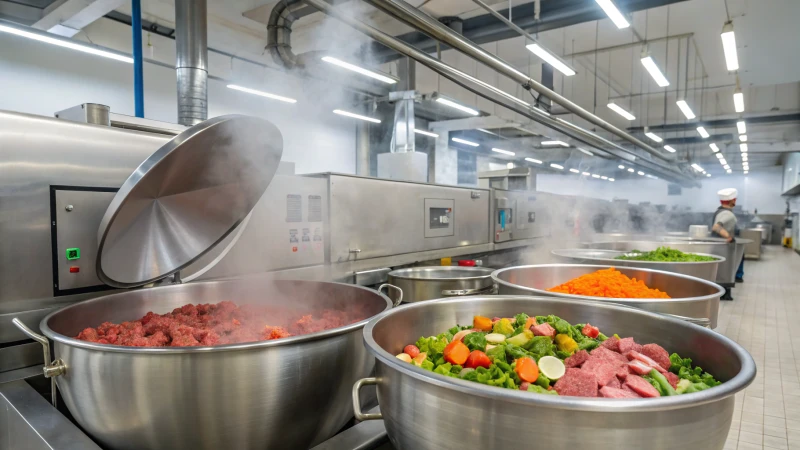
The way pet food is prepared plays a crucial role in its nutritional value and digestibility. Many commercial pet foods, especially kibble, go through high-temperature extrusion processes that can degrade essential nutrients. The Farmer’s Dog, on the other hand, uses a low-temperature, slow-cooking method to prepare its fresh dog food. This ensures that essential vitamins, minerals, and proteins remain intact while also making the food more digestible and palatable for dogs.
The Farmer’s Dog food is cooked using a low-temperature, slow-cooking process that helps preserve essential nutrients while eliminating harmful bacteria. This method ensures that the food remains fresh, nutrient-dense, and easily digestible compared to traditional kibble, which undergoes high-heat extrusion that can degrade vitamins and proteins.
If you’re wondering whether slow-cooked, fresh dog food makes a real difference, the answer is yes. Cooking at lower temperatures helps preserve the natural integrity of ingredients, making the food more nutritious and beneficial for dogs. Let’s explore the process in detail and compare it to conventional kibble manufacturing.
The Low-Temperature Cooking Process
The Farmer’s Dog follows a gentle cooking approach designed to retain as many nutrients as possible. Here's how their process works:
- Sourcing Fresh Ingredients – The food starts with human-grade meats, vegetables, and healthy fats. These ingredients are sourced from reputable farms and suppliers that meet USDA standards.
- Gently Cooking at Low Temperatures – Instead of using high-heat extrusion, the ingredients are lightly cooked at lower temperatures. This slow-cooking method ensures proteins, vitamins, and minerals stay intact.
- Portioning and Packaging – The freshly cooked food is then immediately portioned and packaged to maintain freshness. Unlike kibble, which may sit on shelves for months, The Farmer’s Dog food is shipped fresh to pet owners.
- Delivery in Fresh, Ready-to-Serve Packs – The meals arrive in pre-portioned packs that are stored in the fridge or freezer, eliminating the need for artificial preservatives.
Benefits of Slow-Cooking for Nutrient Retention
One of the most significant advantages of slow-cooking pet food is that it maximizes nutrient retention. Here’s why it matters:
| Nutrient | Effect of High-Heat Processing (Kibble) | Effect of Low-Temperature Cooking (The Farmer’s Dog) |
|---|---|---|
| Protein Quality | High heat can denature proteins, reducing digestibility | Preserves protein integrity, making it easier to absorb |
| Vitamins & Minerals | Heat-sensitive nutrients like B vitamins and antioxidants can degrade | Nutrients remain bioavailable, promoting better health |
| Fats | High temperatures can cause fat oxidation, leading to rancidity | Healthy fats remain stable and beneficial |
| Digestibility | Over-processed food may be harder to digest | Gently cooked food is easier on the digestive system |
How It Compares to Traditional Kibble Manufacturing
Most commercial dog foods, especially kibble, are produced using a process called extrusion. This involves:
- Grinding ingredients into a powder (which may include meat meal, by-products, and artificial additives).
- Cooking the mixture at extremely high temperatures (over 300°F) to form a dough-like consistency.
- Extruding the dough through high-pressure machines to shape kibble pieces.
- Baking or drying the kibble further to remove moisture, extending shelf life.
- Spraying with artificial flavors or fats to enhance palatability.
The result? Kibble may be shelf-stable, but the extreme heat and processing can strip essential nutrients, requiring synthetic additives to compensate.
| Feature | The Farmer’s Dog (Slow-Cooked) | Traditional Kibble (Extruded) |
|---|---|---|
| Cooking Temperature | Low, gentle cooking (~160-180°F) | High heat (~300°F or more) |
| Nutrient Retention | High – maintains vitamins and proteins | Lower – nutrients degrade, requiring fortification |
| Protein Quality | Whole, fresh meats preserved | Meat meals and by-products often used |
| Digestibility | Easier to digest | Can be harder for dogs to process |
| Additives | No artificial preservatives | Often contains artificial flavors, colors, and preservatives |
Why Does Cooking Temperature Matter for Your Dog’s Health?
The temperature at which dog food is prepared directly affects the bioavailability of nutrients. For example:
- Vitamin C & B Vitamins: These water-soluble vitamins degrade quickly at high temperatures.
- Amino Acids (Protein Building Blocks): Overheating can alter amino acids, making them less effective for muscle maintenance.
- Omega Fatty Acids: Essential for skin and coat health, but high heat can oxidize them, reducing their benefits.
With The Farmer’s Dog’s slow-cooking method, these nutrients remain intact, leading to better digestion, healthier skin and coat, increased energy levels, and overall improved well-being for dogs.
Final Thoughts
If you’re looking for a healthier alternative to kibble, The Farmer’s Dog offers fresh, gently cooked meals that retain essential nutrients. The low-temperature cooking process ensures that your dog gets high-quality proteins, vitamins, and minerals without artificial additives. Compared to traditional kibble, slow-cooked dog food is easier to digest, more bioavailable, and provides superior nutrition.
How Is The Farmer’s Dog Food Customized for Each Pet?
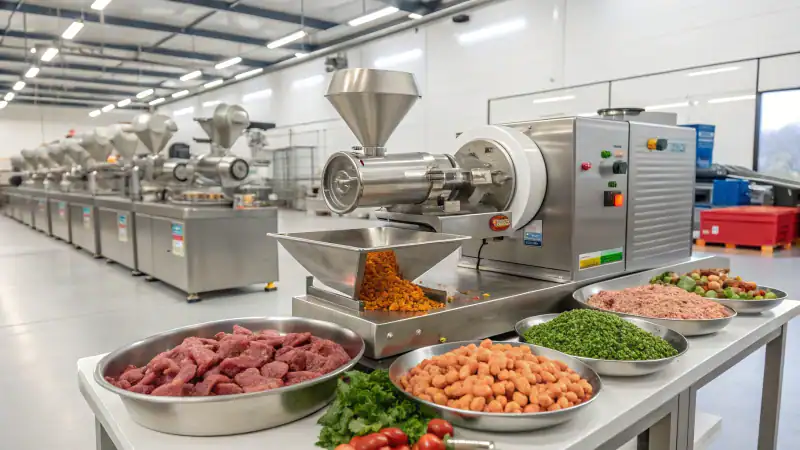
Feeding your dog a one-size-fits-all diet can lead to issues like overfeeding, nutritional deficiencies, or weight problems. Every dog has unique dietary needs based on their breed, size, age, activity level, and health status. The Farmer’s Dog solves this by offering personalized meal plans designed to provide optimal nutrition for each pet. Their approach ensures that every dog gets precisely portioned, balanced, and veterinarian-approved meals tailored to their specific needs.
The Farmer’s Dog customizes meals using an in-depth pet profile that factors in breed, weight, age, activity level, and dietary needs. Each meal is portioned specifically for the dog’s requirements and is formulated by veterinarians to ensure a balanced and nutritious diet. This approach eliminates guesswork, supports long-term health, and makes feeding convenient for pet owners.
If you're wondering how The Farmer’s Dog creates a diet that suits your pet’s needs, let’s break it down step by step.
How The Farmer’s Dog Creates a Personalized Meal Plan
Unlike traditional dog food brands that provide a generic feeding guide, The Farmer’s Dog customizes each meal plan to fit an individual pet’s dietary requirements. Here’s how:
1. Personalized Meal Plans Based on Breed, Weight, Age, and Activity Level
When signing up for The Farmer’s Dog, pet owners answer a series of questions about their dog. These details help determine the ideal calorie intake and nutrient composition for each pet.
Factors Considered in Customization
| Factor | Why It Matters |
|---|---|
| Breed | Different breeds have unique metabolic rates, dietary sensitivities, and common health concerns. A Chihuahua requires different nutrition than a Labrador Retriever. |
| Weight | Helps calculate the ideal daily caloric intake to maintain a healthy weight and prevent underfeeding or overfeeding. |
| Age | Puppies need higher protein and fat content for growth, while senior dogs benefit from joint-supporting ingredients. |
| Activity Level | Highly active dogs burn more calories and need more protein, while less active or senior dogs require a lower-calorie diet. |
| Health Conditions | Some dogs have food sensitivities, allergies, or specific medical needs like weight management or joint support. |
| Food Preferences | Pet owners can specify preferences for certain ingredients or exclude those that don’t work for their dog. |
2. Portion-Controlled Packaging for Convenience and Accuracy
Portion control is one of the biggest challenges in feeding dogs. Overfeeding can lead to obesity, while underfeeding can cause malnutrition. The Farmer’s Dog eliminates this guesswork by providing pre-measured portions based on each dog’s profile.
Benefits of Portion-Controlled Packaging
- Precision Feeding: Meals are pre-portioned according to the dog’s daily caloric needs.
- No More Measuring Cups: Pet parents don’t have to guess or measure food manually.
- Consistency in Nutrition: Every meal contains the right balance of proteins, fats, and nutrients to prevent fluctuations in diet quality.
- Easy Storage & Feeding: Packets are refrigerated or frozen and labeled for quick serving.
Here’s a comparison of The Farmer’s Dog portioning versus traditional dog food feeding guidelines:
| Feature | The Farmer’s Dog (Customized Portions) | Traditional Kibble (Generalized Portions) |
|---|---|---|
| Measurement | Pre-portioned for each dog | Requires manual measurement |
| Accuracy | Based on precise caloric needs | Generalized feeding chart |
| Convenience | No measuring needed | Owners must calculate servings |
| Health Benefits | Helps maintain optimal weight | Risk of overfeeding or underfeeding |
3. Veterinarian-Formulated Recipes for Balanced Nutrition
One of the biggest concerns for pet owners is whether fresh food meets all of their dog’s nutritional needs. The Farmer’s Dog meals are formulated by veterinarians and pet nutritionists to ensure complete and balanced nutrition, following AAFCO (Association of American Feed Control Officials) standards.
How Veterinarians Ensure Nutritional Balance
- Optimal Macronutrient Ratios: The meals contain the right balance of protein, fats, and carbohydrates to fuel a dog’s energy needs.
- Essential Vitamins & Minerals: Recipes include veterinarian-approved nutrient profiles to ensure long-term health.
- Real, Whole Ingredients: Unlike kibble, which may include fillers and by-products, The Farmer’s Dog uses human-grade meats, vegetables, and natural supplements.
- Tailored to Health Needs: Some dogs need higher protein diets, joint-supporting ingredients, or lower-fat meals—The Farmer’s Dog can adjust accordingly.
Comparison: Fresh Meals vs. Traditional Kibble
| Feature | The Farmer’s Dog (Vet-Formulated Fresh Food) | Traditional Kibble |
|---|---|---|
| Ingredient Quality | Human-grade meats & vegetables | Often contains by-products & fillers |
| Nutritional Integrity | Preserves natural nutrients with low-temp cooking | High-heat processing can degrade nutrients |
| Customizability | Adjusted for individual dog needs | One-size-fits-all formula |
| Veterinarian Approved | Formulated by pet nutritionists | Some brands, but not all, meet AAFCO guidelines |
Why Customized Nutrition Matters for Your Dog’s Health
Feeding a diet designed specifically for your dog’s needs can have significant health benefits:
- Weight Management: Custom portions prevent obesity and help maintain an ideal body condition.
- Improved Digestion: Fresh, whole ingredients are easier for dogs to digest compared to processed kibble.
- Healthier Skin & Coat: Balanced omega fatty acids contribute to shinier coats and reduced itching.
- Better Energy Levels: Dogs receive appropriate calories and nutrients to match their lifestyle.
- Longevity & Disease Prevention: Proper nutrition supports a healthy immune system, reducing risks of obesity-related diseases, diabetes, and joint issues.
Final Thoughts
The Farmer’s Dog takes the guesswork out of feeding by offering personalized, portion-controlled, and vet-approved meals for each pet. Instead of a one-size-fits-all approach, their meals are customized based on breed, weight, age, and activity level, ensuring optimal nutrition and health benefits.
What Safety and Quality Control Measures Are in Place for The Farmer’s Dog Food?
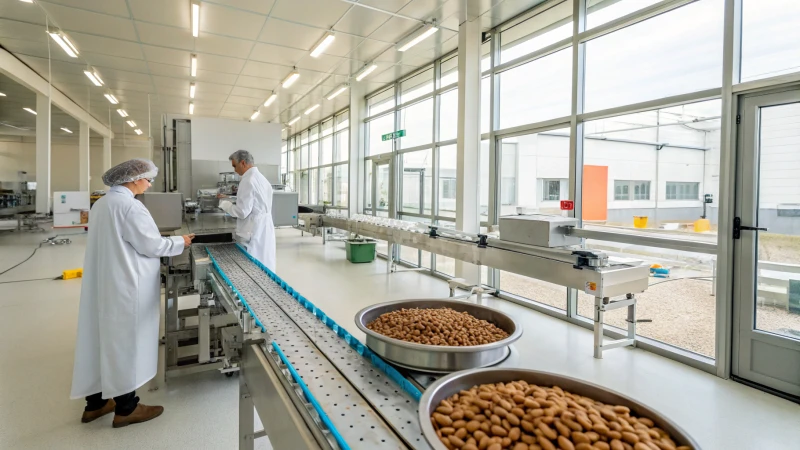
When it comes to feeding your dog, safety and quality control should be a top priority. Many commercial pet food brands have been recalled due to contaminants, poor ingredient quality, and substandard manufacturing processes. The Farmer’s Dog takes a human-grade approach, ensuring that every meal is produced under strict safety standards, tested for contaminants, and meets AAFCO’s nutritional requirements.
The Farmer’s Dog maintains high safety and quality standards by preparing food in USDA-approved kitchens, using only human-grade ingredients, and conducting rigorous testing for contaminants. Their recipes are formulated to meet AAFCO guidelines, ensuring complete and balanced nutrition for dogs. This comprehensive approach guarantees freshness, safety, and optimal health benefits.
If you’re wondering what makes The Farmer’s Dog safer than traditional kibble or canned pet food, let’s break down their quality control measures in detail.
1. USDA-Approved Kitchens and Human-Grade Production Standards
Unlike many commercial pet food brands that manufacture in facilities not held to human food standards, The Farmer’s Dog prepares meals in USDA-certified kitchens that follow the same regulations as those producing human food.
Key Safety Features of The Farmer’s Dog’s Production Process
| Feature | The Farmer’s Dog (Human-Grade Production) | Traditional Pet Food Factories |
|---|---|---|
| Kitchen Standards | USDA-certified kitchens used for human food | Pet food plants with less oversight |
| Ingredient Quality | 100% human-grade meats and vegetables | May contain by-products, fillers, and rendered ingredients |
| Processing Methods | Low-temperature cooking to preserve nutrients | High-heat extrusion that degrades nutrients |
| Preservatives | No artificial preservatives | Often contains synthetic preservatives for shelf stability |
| Storage & Handling | Food is kept fresh in refrigeration | Kibble is stored for months in warehouses |
Why USDA-Approved Kitchens Matter
- Stricter cleanliness regulations reduce the risk of contamination.
- Ingredient sourcing is held to higher standards, ensuring that only fresh, quality meats and vegetables are used.
- No low-quality fillers, artificial preservatives, or meat meals are allowed in production.
- Safer storage methods—instead of long shelf-life kibble, meals are delivered fresh and kept refrigerated or frozen.
2. Rigorous Testing for Contaminants and Ingredient Safety
One of the biggest risks in pet food is contamination with bacteria, mold, heavy metals, or harmful additives. The Farmer’s Dog takes extensive precautions to ensure that every ingredient and final product is safe and free from toxins.
Safety Testing Procedures
- Ingredient Screening: Before production begins, all ingredients undergo supplier verification to ensure they meet human-grade safety standards.
- Microbial Testing: Every batch of food is tested for Salmonella, E. coli, and Listeria, which are common contaminants in lower-quality pet food.
- Heavy Metal & Toxin Testing: Meals are analyzed for pesticides, heavy metals, and mycotoxins, which can pose serious health risks to dogs.
- Batch Tracking & Quality Control: Each meal is assigned a batch number, allowing for full traceability in case of safety concerns.
How The Farmer’s Dog Testing Compares to Traditional Pet Food Brands
| Testing & Safety | The Farmer’s Dog | Traditional Kibble Brands |
|---|---|---|
| Ingredient Quality Checks | Every ingredient is tested | Many brands use low-quality or rejected ingredients |
| Microbial Testing (Salmonella, E. coli, Listeria) | Every batch is tested | Testing is inconsistent across brands |
| Heavy Metal & Pesticide Screening | Strict safety standards | May contain traces of heavy metals from poor ingredient sourcing |
| Artificial Preservatives | None | Often contains synthetic preservatives |
| Batch Traceability | Every meal is trackable | Some brands lack traceability, making recalls difficult |
Why Contaminant Testing Matters for Your Dog’s Health
- Prevents bacterial infections that can cause foodborne illnesses in dogs and humans.
- Ensures clean, toxin-free meals—avoiding issues with heavy metals or mold contamination.
- Increases reliability and trust—each batch is verified for safety before being shipped.
3. Compliance with AAFCO Nutritional Guidelines
The Association of American Feed Control Officials (AAFCO) sets the standard for complete and balanced pet nutrition. The Farmer’s Dog follows these guidelines to ensure that every meal provides all essential nutrients for a dog’s health.
What AAFCO Compliance Means
- Meets Canine Nutritional Needs – Recipes contain the required levels of proteins, fats, carbohydrates, vitamins, and minerals to maintain optimal health.
- Supports Different Life Stages – Meals are formulated for puppies, adults, and senior dogs, ensuring the right nutrient balance at every stage.
- No Guesswork for Pet Owners – Unlike homemade diets, which can lack essential nutrients, The Farmer’s Dog meals are pre-balanced by veterinary nutritionists.
AAFCO Nutrient Standards vs. The Farmer’s Dog
| Nutrient Requirement | AAFCO Standard | The Farmer’s Dog |
|---|---|---|
| Protein | Required for muscle health | Exceeds AAFCO minimums with high-quality meats |
| Fats & Omega Fatty Acids | Needed for skin, coat, and energy | Includes healthy fats from fish oil and animal fats |
| Vitamins & Minerals | Essential for metabolism and immune function | Naturally sourced and supplemented as needed |
| Carbohydrates | Not required but beneficial | Uses whole vegetables, no fillers or grains |
| Calcium & Phosphorus | Required for bone health | Formulated to maintain proper balance |
Why AAFCO Compliance Matters
- Prevents nutritional deficiencies by ensuring meals contain all necessary vitamins and minerals.
- Supports long-term health by providing complete and balanced nutrition.
- Eliminates the risk of over-supplementation—unlike DIY dog food, which can have excess or insufficient nutrients.
Final Thoughts
The Farmer’s Dog takes pet food safety and quality control to the highest level by using USDA-certified kitchens, human-grade ingredients, and rigorous contaminant testing. Their meals exceed AAFCO nutritional standards, ensuring that every bite is safe, nutritious, and tailored to a dog’s needs.
How Is The Farmer’s Dog Food Packaged and Delivered?
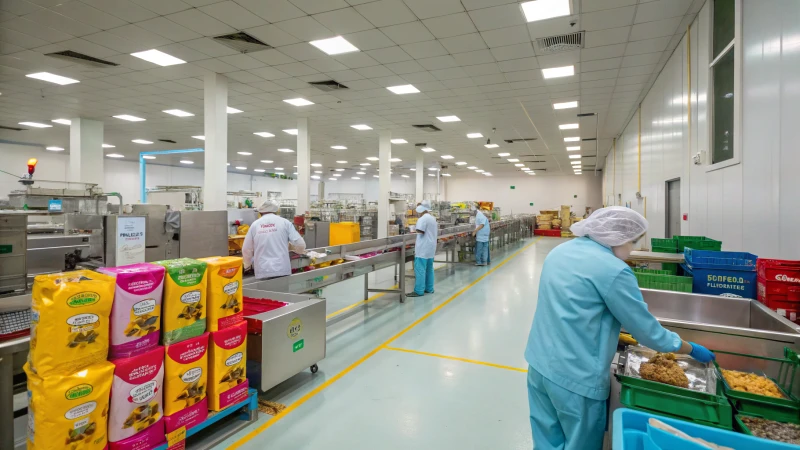
Fresh pet food requires careful packaging and efficient delivery to maintain its quality and safety. Unlike traditional dry kibble, which sits on store shelves for months, The Farmer’s Dog ensures maximum freshness by shipping meals in refrigerated, eco-friendly packaging through a subscription-based system. This guarantees that dogs receive high-quality, nutrient-rich meals with minimal hassle for pet owners.
The Farmer’s Dog food is packaged in fresh, refrigerated containers designed to maintain quality and nutritional integrity. The company uses eco-friendly, sustainable materials to reduce environmental impact. Meals are delivered through a convenient subscription-based system, ensuring that pet owners always have fresh, pre-portioned meals ready for their dogs without the need for trips to the store.
Let’s take a closer look at how The Farmer’s Dog handles packaging and delivery to provide a seamless experience for pet owners.
1. Fresh, Refrigerated Packaging to Maintain Quality
One of the biggest advantages of The Farmer’s Dog’s packaging is that it keeps food fresh without the need for artificial preservatives. Unlike kibble or canned food, which can sit at room temperature for months, The Farmer’s Dog meals are shipped cold and stored in the fridge or freezer.
Key Features of The Farmer’s Dog Packaging
- Vacuum-Sealed & Pre-Portioned Packs – Each meal comes in air-tight pouches that lock in freshness and prevent contamination.
- Refrigerated Shipping – Insulated boxes with dry ice or gel packs keep food at safe temperatures during transit.
- Easy-to-Store Packs – Meals are flat-packed for convenient stacking in the refrigerator or freezer.
- No Artificial Preservatives – Unlike traditional pet food, The Farmer’s Dog uses natural refrigeration to preserve freshness instead of chemicals.
Temperature Control Comparison: The Farmer’s Dog vs. Traditional Pet Food
| Storage Method | The Farmer’s Dog (Fresh Food) | Traditional Kibble/Canned Food |
|---|---|---|
| Preservation Method | Refrigeration & freezing | Artificial preservatives & processing |
| Shelf Life | 4 days in fridge, longer in freezer | Up to 1 year at room temperature |
| Nutrient Integrity | Retains nutrients due to minimal processing | Some nutrient loss due to high-heat processing |
| Risk of Spoilage | Low with proper storage | Kibble can go stale; canned food can degrade over time |
Why Refrigerated Packaging Matters
- Maintains Nutritional Value – Keeps proteins, fats, and vitamins fresh and bioavailable.
- Prevents Spoilage & Bacteria Growth – Ensures safe consumption without the risk of contamination.
- No Need for Artificial Preservatives – Preserves natural flavors and ingredients without additives.
2. Eco-Friendly and Sustainable Packaging Practices
Sustainability is a major concern for many pet owners, and The Farmer’s Dog prioritizes environmentally responsible packaging to reduce waste and carbon footprint.
Sustainable Packaging Features
- Recyclable Insulation – The insulated liners are made from recyclable or biodegradable materials.
- Minimal Plastic Usage – Instead of excessive plastic containers, meals are packed in simple, food-safe pouches.
- Compostable & Recyclable Boxes – Outer shipping boxes are made from 100% recyclable cardboard.
- Gel Ice Packs – The non-toxic gel packs used to keep food cold can be reused or safely disposed of.
Environmental Impact: The Farmer’s Dog vs. Traditional Pet Food Packaging
| Eco-Friendly Factor | The Farmer’s Dog (Sustainable Practices) | Traditional Pet Food (Kibble & Cans) |
|---|---|---|
| Recyclable Materials | Yes – cardboard boxes, liners, and ice packs | Some brands, but many use non-recyclable plastic |
| Biodegradable Insulation | Yes | No – most use Styrofoam or plastic insulation |
| Plastic Waste | Minimal | High – plastic bags, containers, and non-recyclable cans |
| Shipping Efficiency | Direct-to-consumer, reducing retail emissions | Requires storage, distribution, and retail transportation |
Why Eco-Friendly Packaging Matters
- Reduces Environmental Waste – Uses recyclable and biodegradable materials instead of excessive plastic.
- Lowers Carbon Footprint – A direct-to-consumer model eliminates unnecessary transportation and storage emissions.
- Encourages Sustainable Pet Ownership – Allows pet owners to feed their dogs responsibly while reducing plastic waste.
3. Subscription-Based Delivery System for Convenience
Instead of making frequent trips to the pet store, The Farmer’s Dog operates on a subscription model that ensures pet owners always have fresh meals delivered directly to their door.
How the Subscription System Works
- Personalized Meal Plan Setup – Owners provide details about their dog’s breed, weight, age, and activity level to receive a customized meal plan.
- Scheduled Deliveries – Meals are delivered on a regular schedule, ensuring fresh food is always available.
- Flexible Options – Customers can pause, modify, or cancel their subscription at any time.
- Pre-Portioned for Easy Feeding – No need for measuring—each meal is perfectly portioned for the dog’s needs.
Comparison: Subscription Model vs. Traditional Pet Food Shopping
| Feature | The Farmer’s Dog (Subscription-Based) | Traditional Pet Food (Store-Bought) |
|---|---|---|
| Convenience | Delivered directly to your door | Requires trips to the store |
| Freshness | Meals arrive fresh and refrigerated | Often sits on shelves for months |
| Customization | Pre-portioned for your dog’s exact needs | One-size-fits-all feeding guides |
| Flexibility | Adjust, pause, or cancel anytime | Must repurchase manually |
| Emergency Availability | Always stocked at home | Risk of running out and needing a last-minute trip |
Why Subscription Delivery Matters
- Eliminates Store Trips – Saves time and effort by providing automatic restocking.
- Ensures Always-Fresh Food – Never worry about stale kibble or expired canned food.
- Reduces Wastage – Pre-portioned packs prevent overfeeding or throwing away unused food.
Final Thoughts
The Farmer’s Dog combines fresh, safe, and sustainable packaging with a convenient delivery model to provide high-quality nutrition with minimal hassle. Their refrigerated packaging preserves nutrients, eco-friendly materials reduce environmental impact, and subscription-based delivery ensures that pet owners always have fresh meals ready for their dogs.
What Are the Benefits of Feeding Your Dog Fresh Food?
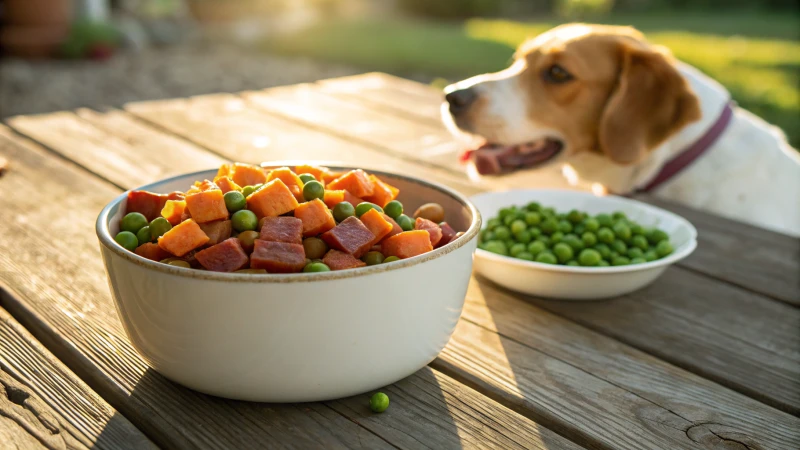
Many pet owners assume that commercial kibble or canned food provides all the nutrients their dog needs. However, highly processed pet foods often contain artificial additives, low-quality ingredients, and preservatives, which can lead to digestive issues, skin problems, and long-term health concerns. Switching to fresh, whole-food meals can significantly improve your dog’s digestion, coat health, and even longevity.
Feeding your dog fresh food improves digestion, enhances nutrient absorption, promotes a healthier skin and coat, and reduces the risk of chronic illness. Fresh meals contain higher-quality proteins, essential fatty acids, and natural vitamins that support overall well-being, potentially extending your dog’s lifespan and improving their quality of life.
If you’re wondering whether fresh food really makes a difference, let’s break down the scientific and health benefits of switching your dog to a fresh, balanced diet.
1. Improved Digestion and Nutrient Absorption
One of the biggest advantages of fresh food is better digestibility. Many commercial dog foods contain fillers, artificial additives, and hard-to-digest ingredients that can cause bloating, gas, and irregular bowel movements.
Why Fresh Food is Easier to Digest
- Whole, Real Ingredients – Fresh meals contain high-quality meats, vegetables, and healthy fats that are naturally easy to break down.
- No Artificial Additives – Many commercial pet foods include preservatives, food dyes, and artificial flavors that can irritate a dog’s digestive system.
- Higher Moisture Content – Fresh food is naturally hydrated, helping dogs avoid dehydration and constipation.
- Fewer Carbohydrate Fillers – Traditional kibble often contains excess starch and grains (corn, wheat, soy) that some dogs struggle to digest.
Digestibility Comparison: Fresh Food vs. Kibble
| Factor | Fresh Dog Food | Traditional Kibble |
|---|---|---|
| Digestibility | High – made from natural, whole ingredients | Lower – processed ingredients can be harder to digest |
| Moisture Content | 70-80% water (natural hydration) | 10-12% water (can lead to dehydration) |
| Additives & Preservatives | None – naturally preserved by refrigeration | Contains artificial preservatives, colors, and flavor enhancers |
| Absorption Rate | Higher bioavailability of nutrients | Some nutrients are lost due to high-heat processing |
Signs That Fresh Food Improves Digestion
- Smaller, Firmer Stools – More nutrients are absorbed, resulting in less waste.
- Less Gas & Bloating – Highly digestible ingredients reduce fermentation in the gut.
- Improved Gut Health – Natural fiber from vegetables and whole foods supports healthy bacteria.
2. Healthier Skin, Coat, and Overall Well-Being
A dog’s coat and skin health are directly affected by diet. Dry, flaky skin, excessive shedding, and dull fur can often be traced back to nutritional deficiencies in commercial pet food. Fresh meals provide essential fatty acids, antioxidants, and vitamins that nourish the skin and coat from within.
Key Nutrients for Skin & Coat Health
| Nutrient | Role in Skin & Coat Health | Found in Fresh Foods |
|---|---|---|
| Omega-3 & Omega-6 Fatty Acids | Reduce inflammation, improve coat shine | Salmon, fish oil, flaxseeds |
| Vitamin E | Protects skin cells from oxidative damage | Leafy greens, sunflower seeds |
| Zinc | Helps with wound healing and prevents flaky skin | Beef, chicken, pumpkin seeds |
| Biotin (Vitamin B7) | Supports hair growth and coat luster | Eggs, liver, sweet potatoes |
Comparison: Fresh Food vs. Processed Kibble for Skin & Coat Health
| Skin & Coat Factor | Fresh Food Diet | Kibble-Based Diet |
|---|---|---|
| Coat Shine & Softness | Improved with natural oils and fatty acids | Can be dry and brittle due to low-quality fats |
| Shedding Control | Balanced nutrition reduces excessive shedding | Nutrient deficiencies can increase shedding |
| Skin Irritations & Allergies | Reduced due to natural anti-inflammatory ingredients | Common due to artificial additives and grain fillers |
Visible Improvements After Switching to Fresh Food
- Shinier, softer fur within a few weeks.
- Less itching and scratching, especially in dogs with food sensitivities.
- Reduced ear infections and skin irritations caused by inflammatory ingredients in kibble.
3. Potential Lifespan Extension and Reduced Risk of Chronic Illness
Studies have shown that proper nutrition can extend a dog’s life and prevent common diseases like obesity, diabetes, and arthritis. Dogs fed a fresh, whole-food diet are more likely to stay at a healthy weight, maintain strong joints, and avoid metabolic disorders.
How Fresh Food Supports Longevity
- Prevents Obesity – Fresh food is less calorie-dense than kibble, helping dogs maintain a healthy weight.
- Reduces Inflammation – Natural antioxidants and healthy fats lower the risk of arthritis and chronic pain.
- Supports Organ Health – Fresh diets contain natural taurine and essential amino acids, which support heart and kidney function.
- Balances Blood Sugar Levels – Whole foods with low glycemic index ingredients reduce the risk of diabetes.
Disease Prevention: Fresh Food vs. Kibble
| Health Concern | Fresh Food Diet | Kibble-Based Diet |
|---|---|---|
| Obesity Risk | Lower – pre-portioned meals prevent overfeeding | Higher – high in carbs and empty calories |
| Diabetes | Balanced blood sugar from real ingredients | High sugar and carb content increase risk |
| Heart Disease | Natural taurine supports heart function | Some kibbles lack essential heart nutrients |
| Arthritis & Joint Health | Anti-inflammatory nutrients improve mobility | Processed diets may worsen inflammation |
Studies on Fresh Diets and Longevity
A Belgian study on canine nutrition found that dogs fed a fresh, home-prepared diet lived on average 3 years longer than those fed processed commercial diets.
Key Findings:
- Dogs eating fresh food had fewer cases of cancer, kidney disease, and arthritis.
- They maintained higher energy levels and healthier body weights.
- Owners reported fewer vet visits and lower medical costs over time.
Final Thoughts
Feeding your dog fresh, whole-food meals can have life-changing benefits, from better digestion and a shinier coat to disease prevention and a longer lifespan. Unlike processed kibble, which can contain low-quality fillers and artificial additives, fresh food provides essential nutrients in their natural, bioavailable form.
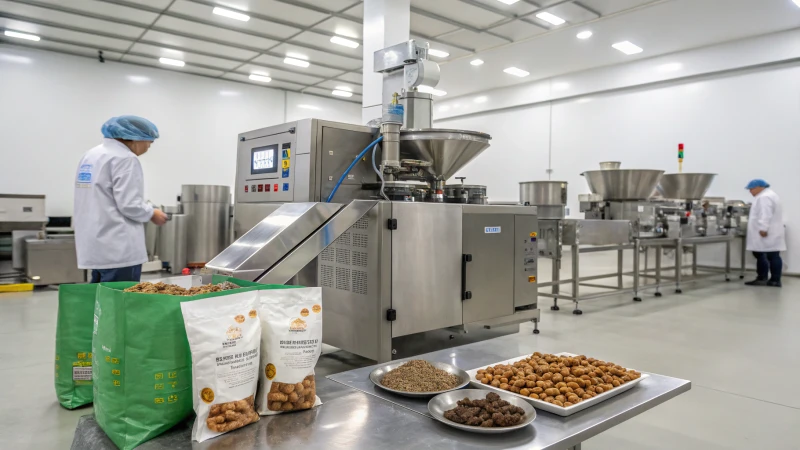
FAQ
How is The Farmer’s Dog food made?
The Farmer’s Dog food is made using fresh, human-grade ingredients. It is gently cooked at low temperatures to retain nutrients and then packaged for direct-to-consumer delivery. The process ensures high digestibility and nutritional value for dogs.
What ingredients are used in The Farmer’s Dog food?
The Farmer’s Dog uses real, whole-food ingredients such as beef, chicken, turkey, and vegetables like sweet potatoes, carrots, and spinach. It avoids fillers, artificial preservatives, and by-products commonly found in kibble.
Is The Farmer’s Dog food cooked or raw?
The Farmer’s Dog food is lightly cooked at low temperatures. This process eliminates harmful pathogens while preserving essential nutrients, making it safer and healthier than raw food options.
Where is The Farmer’s Dog food made?
The Farmer’s Dog food is made in human-grade kitchens in the United States. These facilities follow strict quality and safety regulations to ensure the best food standards for dogs.
Is The Farmer’s Dog food worth it?
Yes, The Farmer’s Dog food is worth it for pet owners seeking a fresh, high-quality diet for their dogs. It offers balanced nutrition, improved digestion, and better overall health compared to traditional kibble.
References
- The Farmer’s Dog - How It Works - https://www.thefarmersdog.com/digest/how-the-farmers-dog-works/
- The Farmer’s Dog Ingredients - https://www.thefarmersdog.com/digest/farmers-dog-ingredients-recipes/
- USDA Human-Grade Standards - https://www.usda.gov/
- Benefits of Fresh Dog Food - https://www.akc.org/expert-advice/nutrition/fresh-dog-food-vs-kibble/
- The Farmer’s Dog Reviews - https://www.trustpilot.com/review/thefarmersdog.com
- Dog Nutrition Science - https://www.petmd.com/dog/nutrition
- Veterinarian Insights on Fresh Food - https://www.avma.org/resources-tools/pet-owners/petcare/dog-nutrition
- Direct-to-Consumer Pet Food Market - https://www.forbes.com/sites/
- Importance of Gently Cooked Food for Pets - https://www.ncbi.nlm.nih.gov/
- Comparison of Dog Food Types - https://www.dogfoodadvisor.com/



